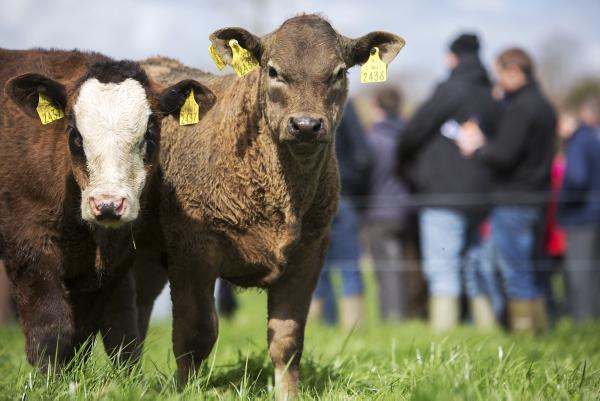“With the farm being used as a tool to teach over 650 students, it must demonstrate best practice,” Derek told last week’s event in Limerick, “but it must also be a viable and profitable suckler herd.” A common theme throughout the conference was the need for farmers to use a network of people for advice, and this applies to also Pallaskenry, accepted Derek.
A 50-cow suckler enterprise is run, among others, on the farm. What was traditionally an autumn-calving herd is changing to a spring-calving system to fully utilise grass production and liveweight gain from grass on the farm.
There is a clear need to alter the breeding programme to improve the maternal index of the herd as the average is currently €65, with the herd varying from -€16 to €143. This puts the herd at an average of three stars, which is not where the college wants to be.
The calving interval slipped from 380 days in 2013 to 385 days in 2015 and the extent of the calving period stretched from six months in 2013 to eight in 2015 – the herd is heading in the wrong direction.
Targets
A new suckler herd will be sourced with the help of ICBF. The aim is to get the herd to an average of €180 to €185 on the replacement index, which would place them in the top 1% in the country. This would lead to a €120 increase per cow; with 50 cows on the farm this would equal €6,000 of an increase.
The herd will not be breed specific. Derek was adamant about this. As long as the cow is high on the replacement index, it does not matter what breed she is. They must be tested for Neospora and Johne’s disease before they leave the selling herd, with Pallaskenry covering the costs of the testing. They must also have achieved an average daily gain of 1.10kg from birth.
While this type of herd may cause management issues with different breeds, the college has to demonstrate best practice. Derek said: “The student is number one, and to be best you need to learn from the best.”
Read more
Getting more from grazing - IGA beef conference
“With the farm being used as a tool to teach over 650 students, it must demonstrate best practice,” Derek told last week’s event in Limerick, “but it must also be a viable and profitable suckler herd.” A common theme throughout the conference was the need for farmers to use a network of people for advice, and this applies to also Pallaskenry, accepted Derek.
A 50-cow suckler enterprise is run, among others, on the farm. What was traditionally an autumn-calving herd is changing to a spring-calving system to fully utilise grass production and liveweight gain from grass on the farm.
There is a clear need to alter the breeding programme to improve the maternal index of the herd as the average is currently €65, with the herd varying from -€16 to €143. This puts the herd at an average of three stars, which is not where the college wants to be.
The calving interval slipped from 380 days in 2013 to 385 days in 2015 and the extent of the calving period stretched from six months in 2013 to eight in 2015 – the herd is heading in the wrong direction.
Targets
A new suckler herd will be sourced with the help of ICBF. The aim is to get the herd to an average of €180 to €185 on the replacement index, which would place them in the top 1% in the country. This would lead to a €120 increase per cow; with 50 cows on the farm this would equal €6,000 of an increase.
The herd will not be breed specific. Derek was adamant about this. As long as the cow is high on the replacement index, it does not matter what breed she is. They must be tested for Neospora and Johne’s disease before they leave the selling herd, with Pallaskenry covering the costs of the testing. They must also have achieved an average daily gain of 1.10kg from birth.
While this type of herd may cause management issues with different breeds, the college has to demonstrate best practice. Derek said: “The student is number one, and to be best you need to learn from the best.”
Read more
Getting more from grazing - IGA beef conference






 This is a subscriber-only article
This is a subscriber-only article






SHARING OPTIONS: